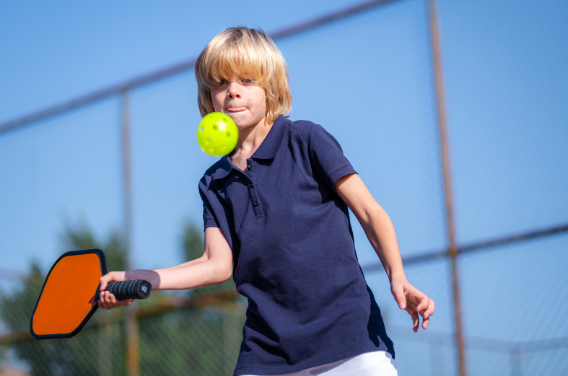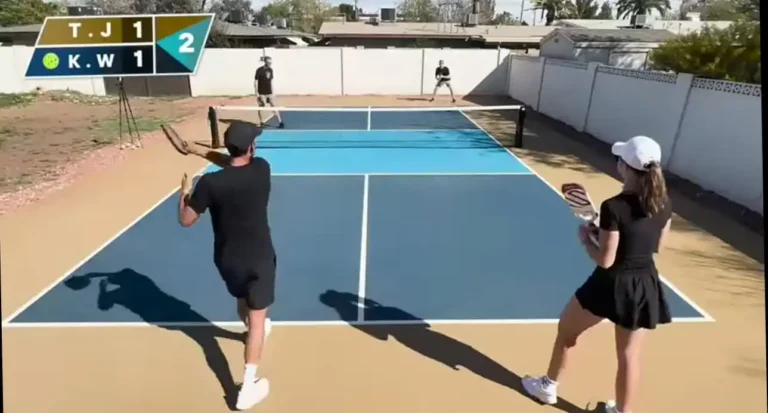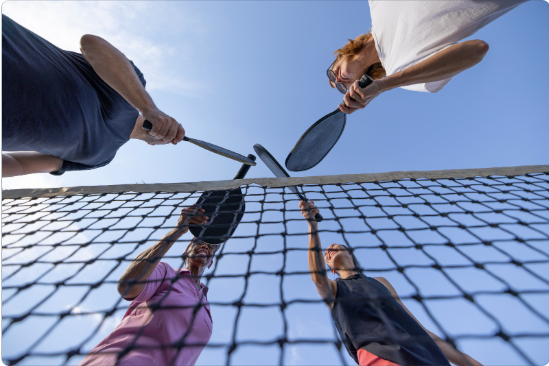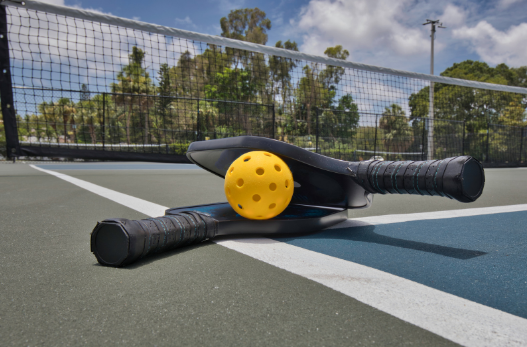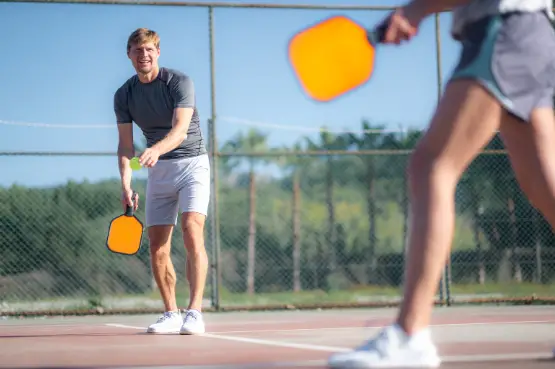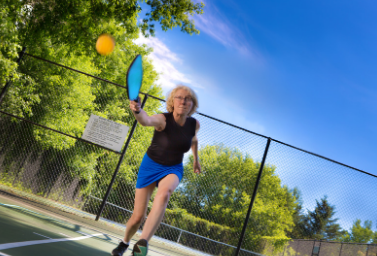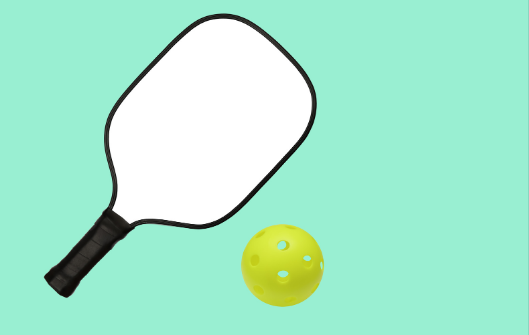Footwork First: Proper Movement and Positioning in Pickleball
Footwork First: Proper Movement and Positioning in Pickleball” emerges as a comprehensive guide, dedicated to emphasizing the critical importance of footwork in pickleball. This sport, an amalgamation of tennis, badminton, and table tennis, has rapidly grown in popularity, drawing players of all ages and skill levels. Its appeal lies in its simplicity and social nature, yet at its competitive core, the mastery of footwork stands as a pivotal aspect often undervalued by many players.
The essence of this introduction is to shed light on the central role of footwork in pickleball. Unlike other racket sports, pickleball demands distinct movement patterns, primarily due to its smaller court size and specific rules, such as the non-volley zone or ‘kitchen’. Effective footwork in pickleball isn’t just about quickness or agility; it encompasses strategic positioning, anticipation, and the ability to read the game, which are just as crucial as stroke techniques.
In these pages, we will dissect the fundamentals of proper movement and positioning, exploring how balance, coordination, and swift reflexes intertwine to not only enhance performance but also to minimize the risk of injury. We will guide you through various footwork techniques tailored for pickleball, including lateral movements, quick front-and-back motions, and the art of effectively covering the court. Special attention will be paid to the ‘split-step’, a crucial maneuver that enables players to react swiftly and effectively to their opponent’s shots.
One of the largest questions asked by using beginner players in racket sports is ‘How do I improve my footwork’? This is one of the most crucial elements of pickleball but is regularly overlooked and almost in no way labored on. Good footwork maintains your balance for the duration of a point. Often players pass more than important and are not handiest exhausted but additionally never absolutely recover from the preceding shot. Thinking much less is greater is prime to becoming extra green on the court docket.
Whether you are a amateur-stage player or a expert, footwork and stability are the most important fundamentals you need to understand and execute well to turn out to be a top-stage player. We will delve into the essential strategies, drills, and sports to enhance your agility and normal overall performance on the pickleball court.
“Footwork First” is more than just a guide; it’s an essential toolkit for anyone aspiring to elevate their pickleball game. Whether you are a beginner looking to learn the basics or an advanced player aiming to refine your skills, this guide will transform the way you move on the court, making your game more efficient, effective, and enjoyable. Join us on this journey to mastering the art of movement and positioning in pickleball, and watch as your game transforms from the ground up.
The key takeaways
- Essential Role of Footwork: Footwork is not just a part of the game; it’s a fundamental aspect that significantly impacts performance in pickleball. It’s as crucial as learning strokes or serving techniques.
- Unique Movement Requirements: Pickleball’s specific court size and rules, especially the non-volley zone, necessitate distinct movement patterns, differentiating it from other racket sports.
- Balance, Coordination, and Reflexes: These are the pillars of effective footwork. Understanding how to balance, coordinate movements, and react quickly are vital for improving your game.
- Strategic Positioning and Anticipation: Good footwork involves more than physical agility; it’s about strategically positioning oneself and anticipating the opponent’s moves.
- Importance of the Split-Step: This fundamental footwork technique is crucial for quick and efficient responses to the opponent’s shots.
- Adapting Footwork to Game Variations: Footwork varies between singles and doubles play, and players must adapt their movements accordingly.
- Correcting Common Mistakes: Identifying and correcting common footwork mistakes is a key step in advancing your skill level.
- Injury Prevention: Proper footwork is not only about enhancing performance but also about minimizing the risk of injuries.
- Comprehensive Guide for All Levels: The guide is designed for players at all skill levels, from beginners to advanced, emphasizing continuous improvement in footwork.
- Transformation of Gameplay: By mastering footwork, players can significantly transform their gameplay, making it more efficient, effective, and enjoyable.
Understanding the Basics of Pickleball Footwork
Pickleball, a sport that ingeniously combines elements of tennis, badminton, and table tennis, has captivated a wide range of enthusiasts, thanks to its engaging gameplay and approachable rules. At its core, pickleball is played on a court that measures 20 feet in width and 44 feet in length, divided into zones, including the non-volley zone or the ‘kitchen’. This unique court layout plays a significant role in the sport, especially in how players maneuver and strategize their footwork.
Footwork in pickleball is more than just moving around the court; it’s a vital element that can significantly impact a player’s ability to reach the ball, execute shots effectively, and outmaneuver opponents. Good footwork allows for quick, agile movements, helping players to maintain balance, generate power in their strokes, and position themselves optimally for both offensive and defensive plays. In pickleball, where the ball can travel at varying speeds and angles, the ability to anticipate and react quickly is paramount, making footwork an essential skill for players at all levels.
When compared to other racket sports, the footwork in pickleball has its unique requirements. Unlike tennis, where players may cover more ground, pickleball demands more condensed, rapid steps due to the smaller court size. This requires a blend of agility and precision, as players must be adept at quick lateral movements and sudden changes in direction. In comparison to badminton, which involves a lot of vertical movement and jumping, pickleball focuses more on horizontal plane agility.
Pickleball, with its dynamic rallies and brief gameplay, demands greater than just skillful shots and strategic performs, it calls for notable footwork. Proper footwork is the foundation of a robust pickleball game, and getting to know it could significantly raise your performance at the court. Whether you’re wielding a pinnacle-tier paddle from a relied on e-trade save or just starting with a fundamental version, combining it with impeccable footwork is fundamental to transferring like a pro. Let’s delve into the fundamental techniques, drills, and sporting activities to decorate your pickleball agility.The Importance of Footwork in Pickleball
Before we dive into techniques, let’s emphasize why footwork is vital:
Positioning: Proper footwork enables you to be within the proper area on the proper time, setting you up for effective pictures.
Agility: Quick and efficient motion allows you to cowl the courtroom extra successfully, reaching balls that would otherwise be out of attain.
Stamina: Efficient movement saves electricity, permitting you to play longer and maintain overall performance during a fit.
- Basic Footwork Techniques
Here are foundational footwork techniques that every pickleball player should master:
Ready Position: Begin together with your feet shoulder-width aside, knees slightly bent, and weight at the balls of your feet. This stance allows for short and balanced movement in any course.
Split Step: As your opponent hits the ball, make a small hop. This “resets” your position and prepares you for fast movement.
Shuffling: Instead of strolling, shuffle your toes facet-to-facet. This ensures you are continually going through the net and maintains your ft in a function to change route fast.
Crossover Step: When desiring to cowl greater ground fast, use a crossover step where one foot crosses over the opposite, bearing in mind faster lateral
In essence, mastering the basics of pickleball footwork is not only about understanding the court dimensions and rules but also about adapting to the sport’s unique style of play. It involves developing a keen sense of timing, balance, and spatial awareness, differentiating it from other racket sports. For players aiming to excel in pickleball, focusing on refining their footwork techniques can lead to significant improvements in their overall game strategy and performance.
Core Principles of Effective Pickleball Footwork
Pickleball is a unexpectedly developing sport that mixes elements of tennis, badminton, and desk tennis. With its recognition on the upward push, it is important for players to apprehend and adhere to right pickleball etiquette. Following the hooked up regulations of behavior not handiest ensures a pleasant playing enjoy for anyone worried however additionally helps maintain the integrity and spirit of the game. In this newsletter, we are able to explore the important thing components of proper pickleball etiquette that all gamers ought to be acquainted with.
Firstly, balance and stability are vital in pickleball, as they form the foundation for every shot. To maintain your center of gravity, it’s important to adopt a low, wide stance with knees slightly bent. This position not only aids in quick lateral and forward movements but also helps in stabilizing shots. Good balance allows for more controlled and powerful strokes, as it ensures that energy is efficiently transferred from the ground up. Players should practice drills that focus on core strength and stability, such as lunges and squats, to enhance their balance on the court.
Agility and quickness are equally critical in pickleball. The ability to change direction rapidly and respond to the ball’s movement can be the difference between winning and losing a point. Drills that improve responsiveness, such as ladder drills or short sprints, are excellent for enhancing agility. These exercises train the body to accelerate, decelerate, and change directions quickly, providing players with the nimbleness required to cover the court effectively.
Lastly, understanding and mastering directional movement is essential. Pickleball involves a variety of movements – forward to approach the net, backward to return deep shots, and lateral steps for side-to-side coverage. Players should focus on drills that simulate match scenarios, incorporating forward, backward and lateral steps. This not only improves foot speed and coordination but also helps players develop a sense of spatial awareness, allowing them to position themselves optimally on the court.Integrating the core principles of effective pickleball footwork can be likened to unleashing your creativity with PicsArt Mod APK. Just as agility, balance, and strategic movement enhance your gameplay in pickleball, using PicsArt’s versatile editing tools allows you to explore and express your creativity without limitations, elevating your artistic skills.
In summary, the core principles of effective pickleball footwork – balance and stability, agility and quickness, and directional movement – are interlinked and equally important. Focusing on these aspects through targeted drills and practice can significantly improve a player’s performance. Whether you’re a beginner or an experienced player, refining these footwork skills will undoubtedly enhance your ability to navigate the pickleball court with confidence and efficiency.
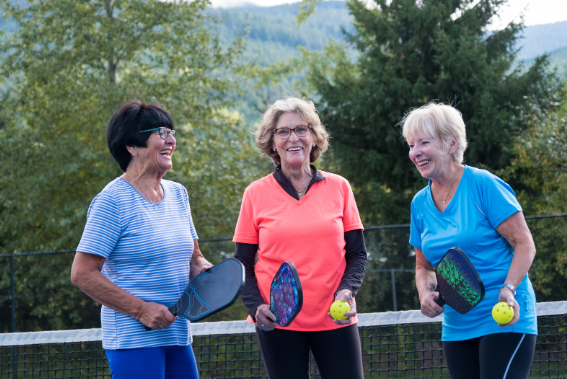
Positioning Techniques for Optimal Play
Optimal positioning in pickleball is a critical skill that can dramatically improve your game play. As the sport continues to surge in popularity, understanding strategic positioning, court coverage, and effective coordination in doubles play becomes crucial for players seeking to excel.
Strategic positioning in pickleball involves reading the game and anticipating your opponent’s moves. This skill requires a keen understanding of not just your opponent’s current position and potential shots, but also their playing style and patterns. By analyzing these factors, players can position themselves in a way that maximizes their ability to respond effectively. Drills focusing on predictive movements can enhance this skill, allowing players to be one step ahead in the game.
Court coverage is all about maximizing your reach and reaction time. This involves understanding the dimensions of the pickleball court and how to utilize them to your advantage. Effective court coverage means being in the right place at the right time, ready to make a play on the ball. Quick footwork drills, combined with exercises that enhance spatial awareness, are essential in improving court coverage abilities.
In doubles play, coordination with your partner is key. This requires clear communication and an understanding of each partner’s strengths and weaknesses. Players should practice drills that require them to move in sync with their partner, covering for each other and strategizing together. Positioning in doubles is about creating a cohesive unit that can cover the court efficiently and outmaneuver opponents through teamwork.
In conclusion, mastering these positioning techniques – strategic positioning, court coverage, and doubles coordination – can significantly boost a pickleball player’s effectiveness on the court. By focusing on these areas, players can develop a deeper understanding of the game, leading to more successful and enjoyable play.
Advanced Footwork Strategies
As pickleball continues to captivate players around the world, advancing your footwork strategies becomes crucial for competitive play. This fast-paced game demands not only skill and strategy but also the ability to adapt footwork to various in-game scenarios. Advanced footwork strategies, including adjusting for different shots, adapting to varied playing surfaces, and anticipating and countering opponent’s movements, are key to elevating your game.
Adjusting footwork for different types of shots is a nuanced skill in pickleball. Each shot, whether it’s a deep baseline drive, a soft drop shot, or a quick volley at the net, requires a specific footwork approach. For powerful baseline shots, players need to take larger, more explosive steps to generate power and cover more court. Conversely, for delicate drop shots, smaller, more precise steps are necessary for fine-tuned control and placement. Practicing drills that mimic these varied shot scenarios can significantly improve a player’s ability to transition smoothly between different footwork styles.
Adapting to different playing surfaces is another advanced strategy. Pickleball can be played on various surfaces, from indoor wooden floors to outdoor concrete and even grass. Each surface affects movement and traction differently. On smoother surfaces, players must be cautious of sliding, requiring tighter, more controlled footwork. Rougher surfaces like concrete offer more grip but can be harder on the joints, demanding a more deliberate footwork pattern to prevent injury. Understanding and practicing on different surfaces enhance a player’s adaptability and readiness for any playing condition.
Anticipating and countering an opponent’s movements is perhaps the most strategic aspect of advanced footwork. This skill involves reading the game, understanding opponent tendencies, and moving accordingly. It’s about being one step ahead, positioning oneself not just for the current shot but for the next one as well. This anticipation requires a high level of game awareness and can be honed through drills that focus on reaction time and strategic positioning. Effective anticipation allows players to cover the court more efficiently, making it harder for opponents to find open spaces.
In summary, advanced footwork in pickleball involves a deeper understanding and application of movement techniques tailored to different shots, playing surfaces, and opponent strategies. By mastering these advanced footwork strategies, players can significantly enhance their performance, making them more formidable and versatile on the pickleball court.
Incorporating Footwork into Your Overall Training Regimen
Incorporating footwork into your overall pickleball training regimen is a strategic move that can substantially uplift your game. Pickleball, a sport that combines elements of precision, agility, and strategy, requires dedicated practice to master, especially when it comes to footwork. A well-rounded training routine that includes regular footwork drills, integrated training, and progress monitoring is essential for any player looking to excel in this fast-paced sport.
Regarding the frequency of footwork practice, consistency is key. Ideally, footwork drills should be a part of every training session. Even 10-15 minutes of focused footwork exercises can lead to significant improvements over time. Regular practice helps in developing muscle memory and enhances the body’s ability to move efficiently and react quickly on the court. For serious players, dedicating specific sessions solely to footwork each week can provide even greater benefits, allowing for a deeper focus on refining these crucial skills.
Integrating footwork drills with other aspects of pickleball training is vital for comprehensive development. Footwork should not be practiced in isolation; rather, it should be incorporated into various playing scenarios. For instance, when practicing serves or volleys, focus on the footwork required for those specific shots. Combine agility drills with stroke practice to mimic real game situations. This integrated approach ensures that footwork becomes an intuitive part of every play, rather than a separate skill to recall.
Monitoring progress and adjusting training accordingly is also crucial. Keeping track of improvements, whether it’s in terms of speed, agility, or coordination, can be motivating and informative. Video analysis can be an effective tool, allowing players to visually assess their footwork and identify areas for improvement. Regular assessments help in understanding whether the current training regimen is effective or if it needs modifications. Setting footwork-specific goals and reviewing them periodically can guide training adjustments, ensuring continuous improvement.
In summary, incorporating footwork into your overall pickleball training regimen is a strategic approach that requires regular practice, integration with other training aspects, and continuous monitoring for progress. By prioritizing footwork in training, players can significantly improve their movement efficiency, reaction time, and overall game performance in pickleball, a sport where every step counts.
Conclusion
In conclusion, mastering footwork in pickleball is essential for anyone serious about improving their game. The benefits, including enhanced agility, better shot accuracy, and improved game strategy, are undeniable. Regular practice and dedication to refining footwork can lead to significant advancements in your overall performance. We encourage players at all levels to continue honing these skills, as the pursuit of improvement in pickleball is an ongoing journey. For further learning, explore online tutorials, join local pickleball clinics, and engage with the community for tips and advice. Remember, every step you take on the court brings you closer to becoming a more proficient and competitive pickleball player.

